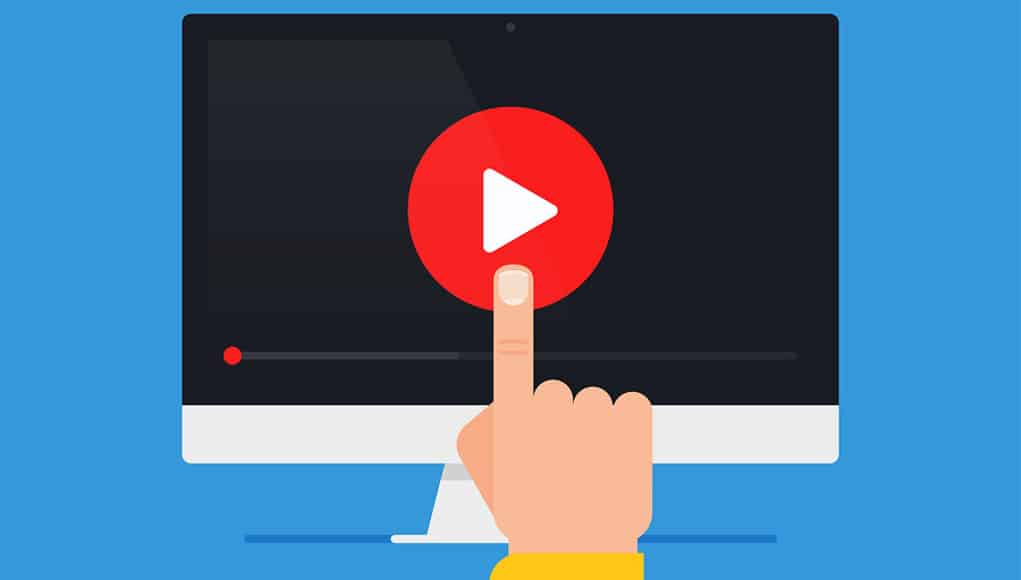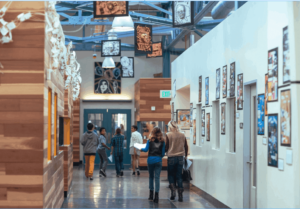8 Video Resources for Authentic Project-Based Learning Design

By Grace Belfiore
Using the MyWays “field of learning,” in Part 1 of this blog we explored how the expanded, deeper set of competencies students need in an increasingly complex world requires an integration of thinking skills and real-world abilities. The first of David Perkins’ seven principles of “whole game learning” suggests one way to develop this integration—“play the whole game,” which means engaging in authentic, holistic activities of real working, playing and creating. And PBL is perhaps the most well-known type of whole game learning.

The Paradox of Well-Designed PBL
We left you hanging, however, on a central paradox embedded in such authentic learning experiences. What longtime practitioners of PBL know is that while the learning experience should be holistic and authentic and give learners organic opportunities for ownership and agency, behind the scenes the experience and/or learning environment need to be intentionally designed and scaffolded to ensure that learners can discover, practice, develop and interact in ways that will enable them to move toward their richer learning goals.
We look back to the whole game learning model (above) for guidance. The hard, behind-the-scenes work of enabling students to develop durable skills, self-reflect, collaborate and learn to drive their own learning are reflected in principles two through seven surrounding “play the whole game.”
 Enter the Tools of Practice
Enter the Tools of Practice
For those ready to embrace the hard part of PBL, the tools underlying learning architectures and carefully-developed processes that make these learning experiences work effectively include:
- Tools for ensuring the coverage of standards and learning progressions.
- Project planning templates and learning targets.
- Protocols for everything from critiques and gallery walks to project sharing, portfolio performances and exhibitions.
- Practices for tuning and calibration.
- A plethora of rubrics—rubrics for project outcomes, rubrics for processes, rubrics for holistic grading, etc.
Faced with a Google Drive full of these tools or a binder of paper versions, the mind boggles, and the promise of engagement and authenticity quickly fades from view. A rubric—even an excellent rubric—sitting statically in a document looks like a rigid, molecularized checklist designed to break down the holistic experience into tasks of little value. And, unfortunately, rubrics can be (and sometimes are) used in that way—if they are not part of deeper learning practices focused on promoting authenticity as well as student agency and capability.
As Bob Lenz, Executive Director of the Buck Institute and co-founder of Envision, explains, “Truth be told, most rubrics disappoint in some way… So it’s not the form of the tool—that blizzard of bullets and boxes—that gives rubrics their power. Rather, it is the practices—the thinking and the actions—that surround rubrics that have made them a transformative force in education.”
 Cue the Video Resources
Cue the Video Resources
The fact is, to understand how the magic of authentic learning emerges from the methods used behind the scenes, sometimes you just need to see PBL in action to experience a three-dimensional version you can get your hands on. Of course, the best way to see PBL is to observe it in person (school visits highly encouraged!), but sometimes a video focused on one aspect of a student project with a voice-over to explain the hard parts, or a clip juxtaposing the magic of the student learning experience with the behind the scenes work that supports it, can make the approach come together.
 Sounds Great, But What if We Aren’t a “PBL School”?
Sounds Great, But What if We Aren’t a “PBL School”?
Before introducing the practice video resources, it might be good to emphasize that to do PBL well, schools don’t need to be “wall-to-wall” PBL schools.
You can include authentic PBL in just parts of your curriculum, course or schedule. “Large-scale,” Bob Lenz clarifies, “is not a defining feature of PBL.” He points out that a PBL project is “an act of creation over time,” but that time could be a week rather than eight or twelve weeks. The essential ingredient is encapsulated in Perkins’ idea of “playing the whole game:” doing something that is meaningful because it develops deeper learning through creative, productive work.
Schools can begin to incorporate this approach through a couple of interested teachers or in one grade level. Or this kind of learning can grow out of a particular content focus, such as the Cesar Chavez School for Public Policy’s progression of increasingly complex service-learning courses, or St. Vrain Valley (CO) public school district’s partnership with IBM to integrate design thinking across its whole system.
With a commitment to equity, it is also worth noting that some question whether PBL can sufficiently help students whose skill development is way behind grade level to pursue the core academic skill-building they clearly need. Some PBL practitioners would argue that their models already address this. (See the evidence on results from high-minority, low-income students in EL Education, Envision Education and Metropolitan Nashville Public Schools, cited in Getting Smart and the Buck Institute’s Preparing Students for a Project-based World.)
Other next-gen learning models have evolved a dual focus on PBL or other experiential learning alongside personalized learning by including a mastery-based, individually-paced and, in some cases, blended learning component focused on developing core skills (e.g., NGLC grantees Summit Public Schools, Brooklyn LAB School, or Thrive Public Schools. See Thrive founder Nicole Assisi’s blog Project-Based Learning: Necessary but Insufficient). These models believe that a carefully constructed both/and approach is particularly helpful with highly challenged populations. Of course, doing the PBL you do well—i.e. in a holistic, authentic way—is vital in any of these approaches.
 Video Resources for Authentic Project-Based Learning Design
Video Resources for Authentic Project-Based Learning Design
Here we highlight only video resources that provide a window into how practitioners of PBL (and related experiential learning) practice their craft as well as video collections of student reflection and authentic work. Consider this a starter set that we culled from resources we found helpful as we developed MyWays. We encourage you to add a comment with links to other collections or individual videos that you have found helpful for understanding how the magic and the method of PBL work together in practice.
1. Most Likely to Succeed Video Prompts
As described in Part 1, Most Likely to Succeed (MLTS), the documentary featuring High Tech High, has helped educators see the value and potential of PBL. The MLTS website has just added a series of clips from the documentary and associated footage to highlight and spur discussion on particular PBL practices and processes. While this resource does not provide the detailed level of insight into practice provided by many of the other links provided here, the clips do provide a useful follow-on for educators who have seen the film or are new to PBL and want to generate thoughtful discussion.
2. The Buck Institute for Education “How To Do PBL” Resources
The resources section of the Buck Institute’s website offers a range of videos that can be filtered by grade level, audience and experience level. This link uses their search phrase “How to Do PBL” to provide a subset focused largely on practice videos, screening out many of the interesting but broader and higher-level keynote speeches from the PBL World conferences.
3. Edutopia Video Resources on PBL
Edutopia has a rich trove of video resources on PBL, but searching for practice-related videos on PBL is not straightforward. One good starting place is the video series Five Keys to Rigorous Project-Based Learning. In addition, PBL is one of Edutopia’s six core strategies, and its Core Strategy Page: Project-based Learning, provides access to a video collection mid-page.
4. Models of Excellence: The Center for High-Quality Student Work (Videos)
The site, run by EL Education and the Harvard Graduate School of Education, is a curated, open-source collection of exemplary student work of the type generated through PBL and includes print as well as video resources. This is the home of the Dancing Prince group critique video that demonstrates the thinking and actions surrounding rubrics that make them transformative. Also look for Austin’s Butterfly. For other inspiration, see the excellent FAQ page that helps guide you through the site.
5. High Tech High Videos
This High Tech High site includes how-to videos, student videos, and “work in progress” videos. (Note: this video site exists alongside the High Tech High Project site. The HTH Project site doesn’t have videos but provides lots of project examples and tools. To see how rich this material can be for professional learning, see this NGLC MyWays analysis of a HTH project on Mayan culture using Whole Game Learning principles.)
6. The Teaching Channel’s Deeper Learning Video Series (and individual DL network sites)
Co-developed with Hewlett’s Deeper Learning initiative, the videos in this series can be accessed by topic (authentic audience, self-directed learning, collaboration, etc.) or deeper learning school network: Asia Society, Big Picture, ConnectEd, EdVisions, Envision, EL Education, High Tech High, Internationals Network for Public Schools, New Tech Network, and New Visions for Public Schools.
However, several of the Deeper Learning models strong on PBL have more videos than featured in the Teaching Channel series, so for a more complete picture, see Envision Videos, EL Education Videos, New Tech Network Videos and High Tech High Videos (#5 above).
7. Deep Dives into Envision and Expeditionary Learning Practices
For those interested in combining video and text to take deep dives into comprehensive PBL practice, or to dig deeper on specific practices you want to know more about, each of the following excellent books comes with a series of videos (on DVD/dedicated websites) embedded into their discussions of PBL and relevant student-engaged assessment practices:
Transforming Schools: Using Project-based Learning, Performance Assessment, and Common Core Standards, by Bob Lenz with Justin Wells and Sally Kingston. The text keys into 21 practice videos from Envision, covering topics from driving questions and teacher collaboration to project design, with heavy emphasis on portfolio preparation and defence.
Leaders of Their Own Learning: Transforming Schools Through Student-Engaged Assessment, by Ron Berger, Leah Rugen, and Libby Woodin. The DVD/web link with this title includes EL Education’s Core Practices in Action video series, covering 27 practices from students unpacking a learning target to students owning their own data, group critique lessons and celebrations of learning.
8. Learn with Two Rivers
This shared practice site from Two Rivers Public Charter School is rich in practice video. While Two Rivers is an EL school, it has also created its own series of 15 practice videos, illustrating everything from its approach to character and expanded outcomes to sharing/debriefing and critique of student work.
This blog originally published on Next Gen Learning Blog
Grace Belfiore is Lead Researcher for Next Generation Learning Challenges’ MyWays framework, and Principal Consultant at Belfiore Education Consulting. Follow her on Twitter: @GraceBelfiore.
Stay in-the-know with all things EdTech and innovations in learning by signing up to receive the weekly Smart Update. This post includes mentions of a Getting Smart partner. For a full list of partners, affiliate organizations and all other disclosures, please see our Partner page.






0 Comments
Leave a Comment
Your email address will not be published. All fields are required.